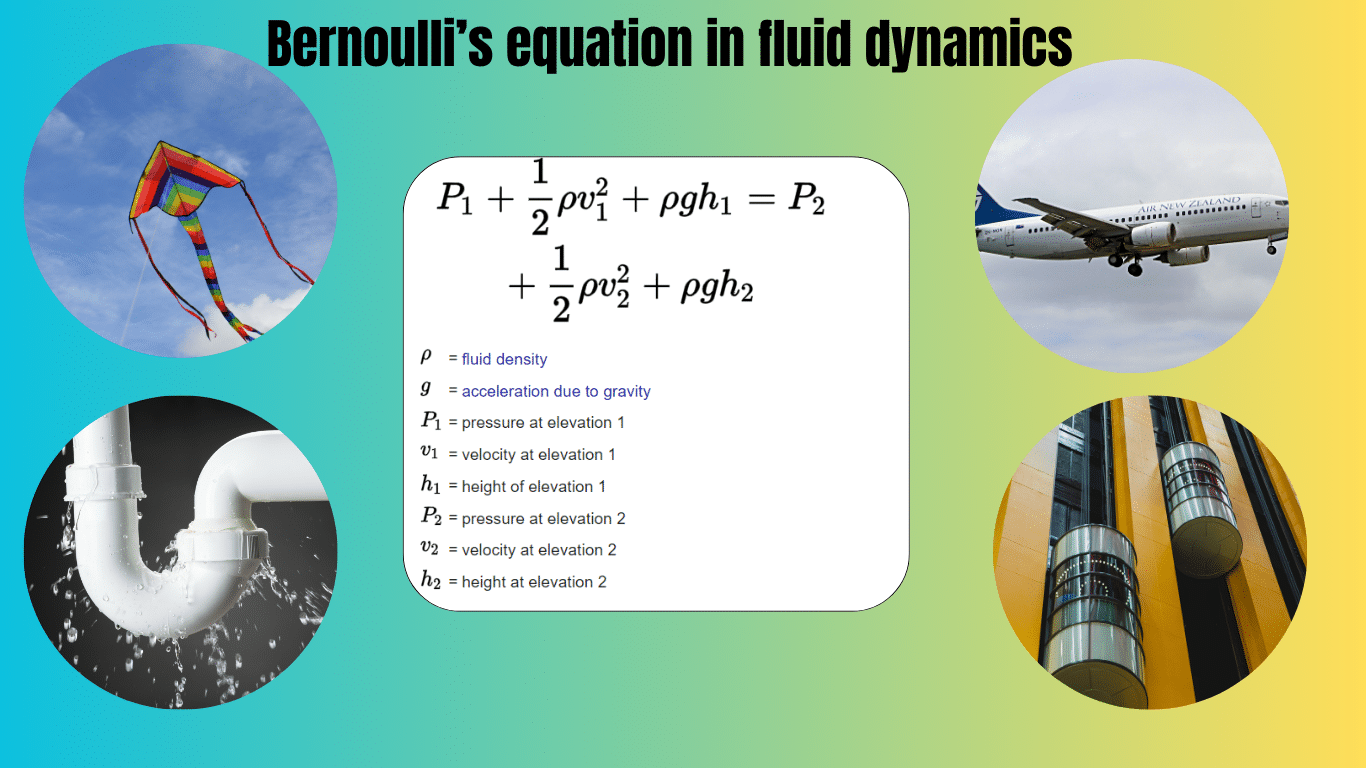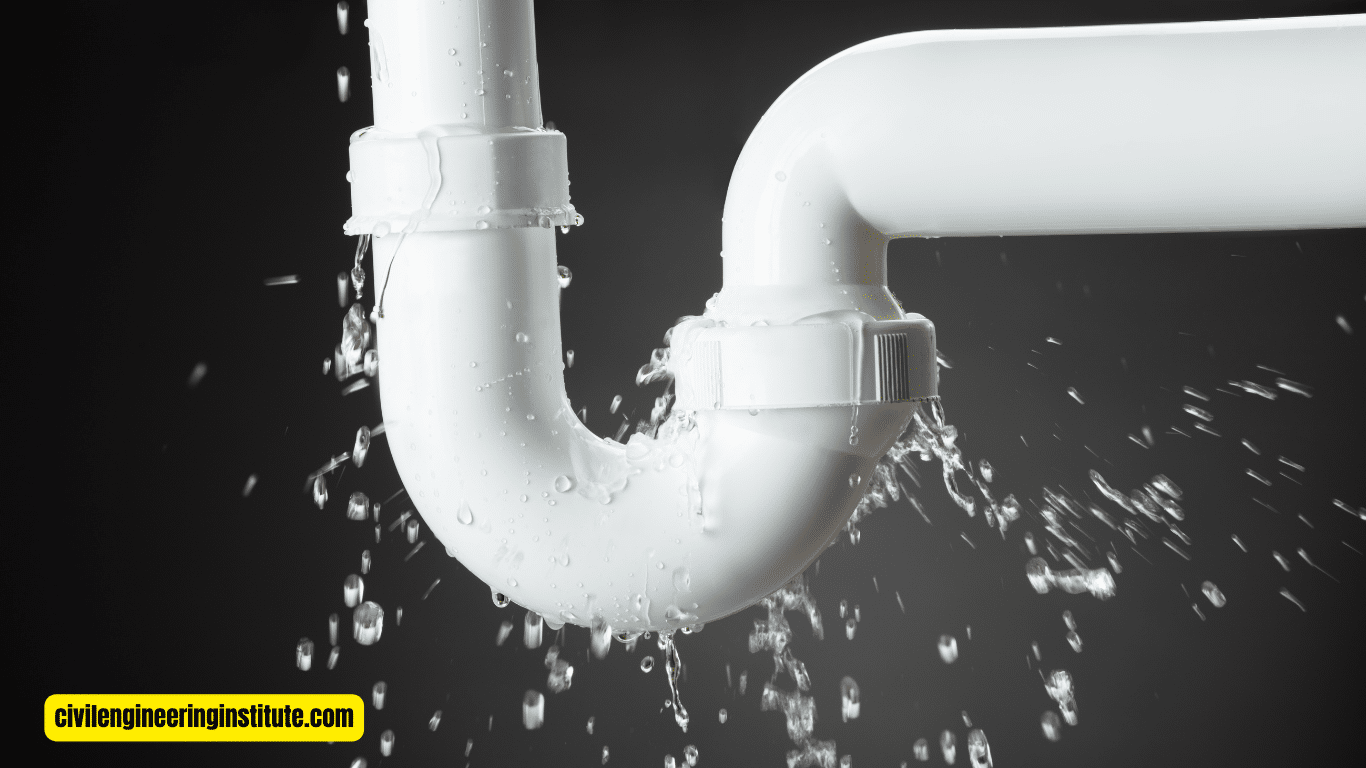Bernoulli’s equation in fluid dynamics is a fundamental principle that helps us understand how fluids move. Essentially, it states that as the speed of a fluid increases, its pressure decreases, and vice versa. This relationship between speed and pressure is important in various applications, from understanding how airplanes fly to how water moves through pipes. In simpler terms, when a fluid speeds up, like air flowing over an airplane wing, its pressure decreases, creating lift.
Conversely, when a fluid slows down, like water passing through a narrow pipe, its pressure increases, Bernoulli’s equation provides insights into these phenomena and forms the basis for many engineering and scientific calculations involving fluid flow. Understanding this concept is essential for anyone interested in fluid dynamics and its practical applications.
Secrets of Bernoulli’s Equation in Fluid Dynamics
Fluid dynamics, the study of how fluids move, is a fascinating field that impacts various aspects of our lives, from the flight of airplanes to the flow of water through pipes. At the heart of fluid dynamics lies Bernoulli’s equation, a fundamental principle that provides insights into the relationship between fluid speed, pressure, and energy. In this comprehensive guide, we’ll unravel the mysteries of Bernoulli’s equation, exploring its significance, applications, and real-world implications in simple and easy-to-understand language.
Understanding Bernoulli’s Equation
At its core, Bernoulli’s equation describes energy conservation for flowing fluids. It states that the total mechanical energy per unit mass of a fluid remains constant along a streamline. This energy consists of three components: kinetic energy (associated with the fluid’s motion), potential energy (related to its height), and pressure energy (due to its pressure). In simpler terms, as a fluid moves faster, its kinetic energy increases, leading to a decrease in pressure energy, and vice versa. This relationship between speed and pressure forms the basis of Bernoulli’s equation.
The Components of Bernoulli’s Equation
To understand Bernoulli’s equation fully, let’s break down its components:
- Kinetic Energy Term
- Potential Energy Term
- Pressure Energy Term
Kinetic Energy Term: This term represents the energy associated with the fluid’s motion and is proportional to the square of its velocity.
Potential Energy Term: Also known as gravitational potential energy, this term accounts for the energy due to the fluid’s height above a reference point, such as the ground or a specific datum.
Pressure Energy Term: This term reflects the pressure exerted by the fluid, which can be converted into mechanical work.
Applications of Bernoulli’s Equation
Bernoulli’s equation finds widespread applications across various fields, including:
- Aeronautics
- Hydraulics
- Meteorology
- Medical Devices
Aeronautics: Understanding Bernoulli’s principle helps explain how airplane wings generate lift. As air flows over the curved surface of a wing, its velocity increases, leading to lower pressure on the top surface compared to the bottom. This pressure difference creates an upward force, allowing the airplane to fly.
Hydraulics: In hydraulic systems, such as water pipes and pumps, Bernoulli’s equation aids in predicting fluid flow rates, pressure changes, and energy losses. Engineers use this knowledge to design efficient plumbing systems, water distribution networks, and hydraulic machinery.
Meteorology: Bernoulli’s principle plays a role in meteorology by explaining phenomena such as the formation of clouds and wind patterns. As air flows from regions of high pressure to regions of low pressure, it changes velocity and pressure, influencing weather patterns on a global scale.
Medical Devices: Medical devices such as ventilators and nebulizers utilize Bernoulli’s principle to regulate airflow and deliver medications effectively. By understanding the relationship between fluid speed and pressure, healthcare professionals can design devices that provide optimal treatment to patients.
Real-World Implications of Bernoulli’s Equation
The practical implications of Bernoulli’s equation extend far beyond the realms of science and engineering. Consider the following real-world scenarios:
- Drinking Straws
- Kite Flying
- Sports Performance
Drinking Straws: When you sip a drink through a straw, you create a pressure difference between the inside and outside of the straw. The liquid can rise up the straw and into your mouth thanks to this pressure drop, which follows Bernoulli’s principle.
Kite Flying: The lift generated by a kite as it soars through the air can be explained by Bernoulli’s principle. As wind flows over the curved surface of the kite, its velocity increases, resulting in lower pressure above the kite compared to below it, lifting the kite into the sky.
Sports Performance: Athletes and sports enthusiasts often leverage Bernoulli’s principle to enhance performance. For example, cyclists tuck their bodies to reduce air resistance and increase speed, while skiers adopt aerodynamic positions to glide more efficiently down slopes.
Some Key Points: Bernoulli’s equation in fluid dynamics
Principle of Bernoulli’s Equation
The principle behind Bernoulli’s equation lies in energy conservation for flowing fluids. It states that the total mechanical energy per unit mass of a fluid remains constant along a streamline. This means that as a fluid moves through a system, its energy remains the same, but it may change forms between kinetic energy (related to its motion), potential energy (associated with its height), and pressure energy (due to the pressure it exerts). Essentially, Bernoulli’s equation helps us understand how energy is distributed within a flowing fluid and how it changes as the fluid moves.
Bernoulli’s Theorem in Fluid Motion
Bernoulli’s equation led to Bernoulli’s theorem, which says that in a steady flow of an ideal fluid, the sum of the fluid’s pressure energy, kinetic energy, and potential energy per unit volume stays the same along any streamline. This theorem provides valuable insights into the behavior of fluids in motion, particularly in scenarios where the flow is steady and frictionless.
Bernoulli’s Assumption in Fluid Mechanics
In fluid mechanics, Bernoulli’s assumption refers to the simplifying assumption that the flow of fluid is steady, inviscid (no viscosity), and incompressible (constant density). While this assumption may not hold true in all real-world situations, it serves as a useful approximation in many engineering and scientific applications, allowing for the derivation of Bernoulli’s equation and the analysis of fluid flow problems.
Bernoulli’s Equation and Its Terms
Bernoulli’s equation is an expression of the conservation of energy for flowing fluids and is given by the equation: P + ½ρv^2 + ρgh = constant. Here, P represents the pressure, ρ is the density of the fluid, v is the velocity of the fluid, g is the acceleration due to gravity, and h is the height above a reference point. The terms in the equation correspond to pressure energy, kinetic energy, and potential energy, respectively.
Where Bernoulli’s Principle is Used
Bernoulli’s principle finds applications in various fields, including aeronautics (flight of airplanes), hydraulics (flow of water through pipes), meteorology (weather patterns), and medical devices (ventilators and nebulizers). Understanding Bernoulli’s principle helps engineers and scientists design efficient systems and devices that rely on fluid flow.
Real-Life Example of Bernoulli’s Principle
A classic example of Bernoulli’s principle in action is the flight of an airplane. As air flows over the curved surface of an airplane wing, its velocity increases, leading to lower pressure on the top surface compared to the bottom. This pressure difference creates an upward force, known as lift, allowing the airplane to overcome gravity and fly.
Limitations of Bernoulli’s Theorem
While Bernoulli’s theorem provides valuable insights into fluid behavior, it has limitations. It assumes ideal conditions such as steady flow and inviscid and incompressible fluids, which may not hold true in all real-world scenarios. Additionally, the theorem does not account for factors such as turbulence, viscosity, and compressibility, which can significantly affect fluid motion.
Advantages of Bernoulli’s Equation
Despite its limitations, Bernoulli’s equation offers several advantages. It provides a simple yet powerful framework for analyzing fluid flow problems and predicting the behavior of fluids in various situations. Additionally, it forms the basis for many engineering calculations and design principles, enabling the development of efficient systems and devices.
Where Bernoulli’s Principle is Not Applicable
Bernoulli’s principle may not be applicable in scenarios involving turbulent flow, compressible fluids, or viscous fluids. Additionally, it may not accurately describe fluid behavior in situations where the flow is unsteady or external forces, such as surface tension or boundary effects, play a significant role.
Bernoulli’s Equation for Fluid Flow
Bernoulli’s equation for fluid flow is expressed as P + ½ρv^2 + ρgh = constant, where P represents pressure, ρ is density, v is velocity, g is acceleration due to gravity, and h is height above a reference point. This equation is derived from the principle of conservation of energy and provides valuable insights into the distribution and transformation of energy within a flowing fluid.
Conclusion
In conclusion, Bernoulli’s equation serves as a cornerstone in the field of fluid dynamics, providing valuable insights into the behavior of flowing fluids. From the flight of airplanes to the flow of water through pipes, the principles elucidated by Bernoulli’s equation find applications in various aspects of our lives. By understanding this fundamental concept, we gain a deeper appreciation for the intricate workings of the natural world and unlock new possibilities for innovation and discovery.
FAQs
What is Bernoulli’s equation in fluid dynamics?
Bernoulli’s equation is a fundamental principle in fluid dynamics that describes the relationship between fluid speed, pressure, and energy along a streamline.
How does Bernoulli’s equation work?
Bernoulli’s equation states that as the speed of a fluid increases, its pressure decreases, and vice versa, while the total mechanical energy per unit mass remains constant.
What are the terms in Bernoulli’s equation?
The terms in Bernoulli’s equation represent pressure energy, kinetic energy (related to speed), and potential energy (related to height above a reference point).
What is the significance of Bernoulli’s equation?
Bernoulli’s equation helps explain various phenomena in fluid dynamics, such as the flight of airplanes, the flow of water through pipes, and the behavior of weather patterns.
Where is Bernoulli’s equation used?
Bernoulli’s equation finds applications in fields like aeronautics, hydraulics, meteorology, and medical devices, where understanding fluid flow is crucial.
Can Bernoulli’s equation be used for all fluid flows?
While Bernoulli’s equation is useful for analyzing steady, inviscid (no viscosity), and incompressible flows, it may not accurately describe turbulent or compressible flow conditions.
What are some real-life examples of Bernoulli’s principle?
Examples include airplane flight, where the curved wing shape creates lift, and drinking straws, where lower pressure inside the straw allows liquids to rise.
What are the limitations of Bernoulli’s theorem?
Limitations include its assumption of ideal conditions and its inability to account for factors like turbulence, viscosity, and compressibility in real-world scenarios.
What are the advantages of using Bernoulli’s equation?
Bernoulli’s equation provides a simple yet powerful framework for analyzing fluid flow problems and designing efficient systems and devices.
Where is Bernoulli’s principle not applicable?
Bernoulli’s principle may not apply in situations involving turbulent flow, compressible fluids, or viscous fluids, where other factors play a significant role in fluid behavior.




